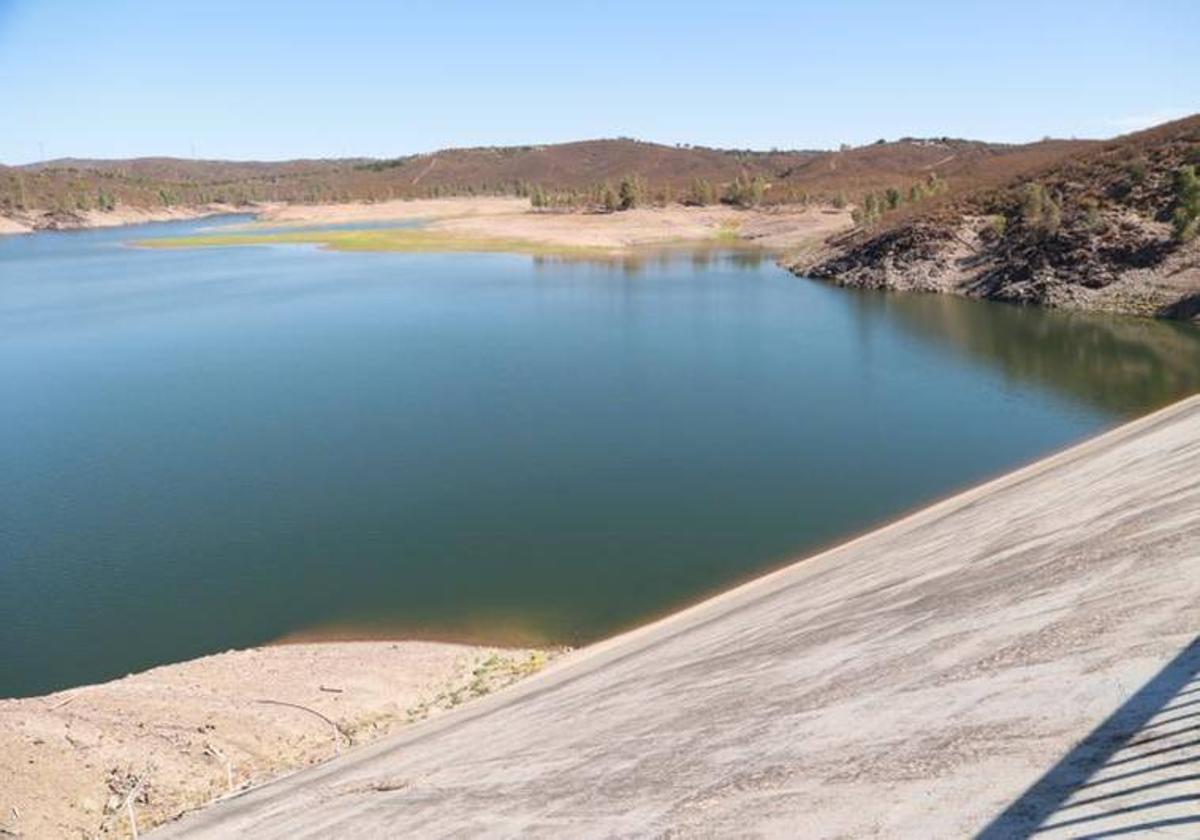

Sections
Highlight

J.A.G.
Madrid
Wednesday, 6 September 2023, 12:07
The passage of the 'dana' weather system that brought heavy downpours and flooding to many areas of the Spanish mainland last weekend has not yet 'officially' recharged the country's reservoirs.
Despite the torrential rain and storms that swept across half of the country, the reservoirs have recorded another week, the thirteenth in a row, of drops in their water levels.
But there is an explanation. All the water that fell has not yet made its way into the reservoirs because it is "in transit" to the various reservoirs in the river basins and has not yet been officially recorded.
According to the latest figures from Spain's Ministry of Ecological Transition (Miteco), Spanish reservoirs are at 37% of their capacity compared to 37.6% just a week ago. They have therefore lost 319 cubic hectometres, a drop of 0.6 points, which is surprising considering the heavy rainfall of the last few days, with accumulated rainfall in some places exceeding 200mm.
But Miteco, which publishes the bulletin with the state of the water reserves in the reservoirs every Tuesday, pointed out an important nuance in relation to the 'dana': "The heavy rainfall of the weather system is not yet being seen in the reserves, because at the close of the reporting period, the ground water reserves are increasing and in transit through the channels towards the reservoirs".
That means that next Tuesday we should see a rise in the level of Spain's reservoirs once the water in transit enters them.
Right now, and without including the enormous volume of water left behind by the 'dana', the reservoirs store 20,763 cubic hectometres, some 319 hm3 less than just seven days ago. This is slightly less than a year ago (19,671 hm3) and much less than their average for the last ten years, when they had 29,000 cubic hectometres and were at almost 52% of their capacity.
The regions most affected by the 'dana' have not yet been able to count the rainfall collected over the last few days. Only Navarre has increased its reserves, with 1.37% more. The rest fell: La Rioja, by 2.6%; Aragón, by 1.24%; Castilla y León, by 1.03%; Madrid, by 0.75%; Catalonia, by 0.62%; the Valencian Community, by 0.56%; Murcia, by 0.68%; Castilla-La Mancha, by 0.36%; Extremadura, by 0.46%, and Andaluca, by 0.19%.
All indications are that on Tuesday next week, when Miteco publishes its official bulletin again, these regions will offer higher figures. Exactly the same has happened in the provinces, where the data does not agree with the torrential rainfall in places such as Madrid, Toledo, Ávila, Segovia, Tarragona, Cádiz, Castellón and Huesca, where more than 100mm have accumulated in the last three days. For example, the reservoirs of Toledo have barely risen by 1%, while those of Castellón, Cadiz and Tarragona are the same as a week ago and those of Huesca, Segovia and Ávila have fallen. The reason, as mentioned above, is that all the water that will reach the reservoirs has not yet been accounted for. Exactly the same thing is happening with the river basins. The Tagus, for example, which is in one of the areas of the mainland most affected by the storm, is at 47.2% of its capacity, when a week ago it was at almost 48%, a drop that does not match the water received on Saturday and Sunday.
Jorge Olcina, professor of Regional Geographical Analysis at the University of Alicante, said "it is true that we are coming from a very dry and very hot summer in which there has been a lot of evaporation on the ground", but even so he believes that once the data is compiled, there will "very possibly" be an increase in the level of the reservoirs.
Professor Olcina pointed out that not all the water from the rains that have swept half the country these days will be reflected in the reservoirs, because they have been very local rainfalls, affecting specific areas "and in addition to flowing torrentially, much is lost in flood areas and not everything that has fallen reaches the reservoirs. And what is lost is not accounted for". However, he believes that, once the data is updated, there will be reservoirs with more water, especially those in the Tagus basin and its tributaries.
Julio Barea, at Greenpeace, believes that the torrential rains of recent days can only improve, "and very slightly", the situation of soil moisture in some specific areas, "but they hardly serve to refill the reservoirs" because they have been very short and localised, "causing more damage than benefits, with regrettable human losses and serious damage to homes and infrastructure".
Barea pointed out that currently the reservoirs are at 37.03% of their capacityy , i.e. 15 points below the average for the last decade, and recalled that Spain will suffer "more and more" adverse climatic events "with the consequent damage that they will cause". This is why he advocates actions which do not involve building more reservoirs, but others such as a plan to reduce the surface area of irrigated land, not allowing any new "highly water-demanding" projects (such as hotels) in areas with historical supply problems and improving control of illegal water use, among other measures.
Publicidad
Publicidad
Publicidad
Publicidad
Esta funcionalidad es exclusiva para registrados.
Reporta un error en esta noticia

Debido a un error no hemos podido dar de alta tu suscripción.
Por favor, ponte en contacto con Atención al Cliente.

¡Bienvenido a SURINENGLISH!

Tu suscripción con Google se ha realizado correctamente, pero ya tenías otra suscripción activa en SURINENGLISH.
Déjanos tus datos y nos pondremos en contacto contigo para analizar tu caso

¡Tu suscripción con Google se ha realizado correctamente!
La compra se ha asociado al siguiente email
Comentar es una ventaja exclusiva para registrados
¿Ya eres registrado?
Inicia sesiónNecesitas ser suscriptor para poder votar.